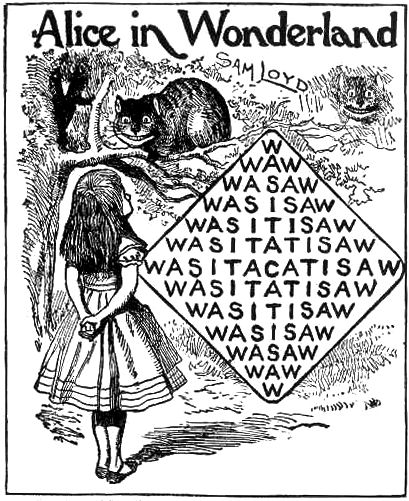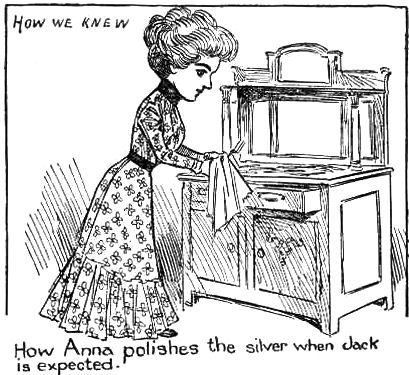



CONTINUING A former reference to Alice’s trip through wonderland. We call attention to her remarkable experiences with the Cheshire cat which had such a way of vanishing away into thin air, so that nothing but its irresistible smile remained. Of course every one remembers the dilemma of the king's executioner, who, being commanded to cut off the head from a cat which had no body, was as sorely puzzled as was the Irishman who was told to decapitate the head of an elephant from the trunk. When Alice first saw her feline friend she desired to find out what species of animal it was, and as they always ask questions in wonderland by writing, she wrote out her query. But as they generally read things backward, or up and down in wonderland, she wrote it as shown in the puzzle. This permits readers to commence and end where they please, just as they should in wonderland; but, as Lewis Carroll forgot to give the answer to his conundrum of why a desk was like a crow, he also forgot the main question in this riddle, which is simply to tell how many ways there are to read the question: “Was it a cat I saw?”
Many good mathematicians fell into the error of attempting to solve Alice’s cryptogram of “Was it a cat I saw,” upon the basis of there being twenty-four starting points and the same number of endings. They reasoned that the square of 24, viz: 576 different ways, would be the correct answer. They overlooked the branch routes which give exactly 252 ways of reaching the center, C, and as there are just as many ways of getting out to the Ws, the square of 252 gives the correct answer as 63,504 different ways.
2. CHARADE.
Ye bards, perhaps my first may do
Ere you begin to sing;
My second oft salutes the ear
When horrid wars begin,
My whole denotes a stupid elf,
So find this out to clear yourself.
Cypher Ans. 8, 21, 13, 4, 18, 21, 13.
HUMDRUM
3.
My first is French, my second is English and my whole is Latin? Latin!
What would give a blind man the greatest delight? Light.
4. HOW WE KNEW.

I will ask the assistance of the class in concealed geography in unraveling a mystery which perplexed me not a little bit during a visit to a friend's house, where I expected to meet Jack, a young man of my acquaintance. The youngster of the family, a bright little lad of 7 years, will become a great puzzlist or politician if he is not killed off young. He “guessed” Jack would be there “all right, all right,” he said, “because why he could always tell almost when Jack would be to supper by the way sister Anna polished the silver.”
For the life of me I could not see through that puzzle, but somehow or other “the boy guessed right the very first, time,” for Jack was there “all right, all right,” so I made a sketch of it, and will ask our juvenile puzzlists to discover if the description of the picture gives any clue to the locality of the incident.
How we knew that Annapolis was the hidden city!
[Page 164]